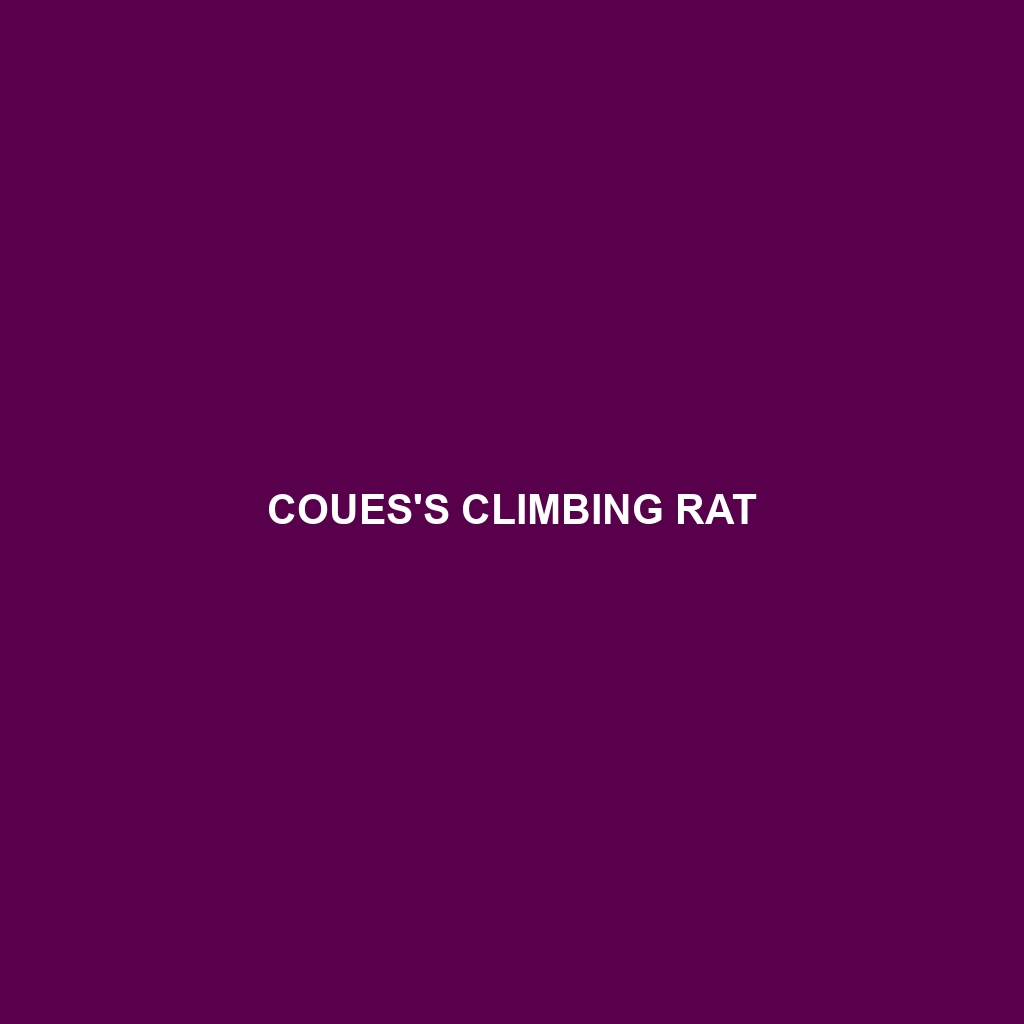Coues’s Climbing Rat
Common Name: Coues’s Climbing Rat
Scientific Name: Rhipidomys couesi
Habitat
Coues’s Climbing Rat is primarily found in Central and South America, specifically inhabiting humid tropical forests and woodlands. Geographic locations include parts of Mexico, Guatemala, Honduras, and the Amazon Basin. This species thrives in areas with dense vegetation, allowing it to effectively maneuver through treetops and forest floors.
Physical Characteristics
This rodent typically measures between 28 to 32 cm in length, including a long, prehensile tail that can reach up to 40% of its total body length. Coues’s Climbing Rat features a coat that is predominantly a rich brown color with lighter underparts. Its large eyes and elongated limbs, paired with sharp claws, make it perfectly adapted for an arboreal lifestyle. These distinctive features contribute to its climbing abilities.
Behavior
Coues’s Climbing Rat is primarily nocturnal and exhibits arboreal habits. Its agile climbing and jumping abilities are essential for escaping predators and foraging for food. Socially, they tend to be solitary, although they may congregate in pairs during the breeding season. They communicate using a variety of vocalizations, which can be heard during the night.
Diet
The diet of Coues’s Climbing Rat primarily consists of fruits, seeds, and nuts, along with insects and other small invertebrates. This omnivorous diet enables the species to adapt to various food sources available in its tropical habitat. Their foraging habits often involve climbing and jumping through trees in search of food.
Reproduction
This species has a breeding season that typically occurs during the rainy months, enhancing the survival rate of offspring. Female Coues’s Climbing Rats give birth to 2 to 5 young after a gestation period of about 25 days. The young are born blind and helpless, making maternal care crucial during the early stages of life.
Conservation Status
The conservation status of Coues’s Climbing Rat is currently listed as Least Concern according to the International Union for Conservation of Nature (IUCN). However, habitat destruction due to deforestation and human encroachment poses potential threats to their population in specific regions.
Interesting Facts
Coues’s Climbing Rat is known for its remarkable agility, enabling it to leap distances that are impressive for its size. Another intriguing fact is its ability to glide short distances due to its skin flaps, which can help it escape predators.
Role in Ecosystem
In its ecosystem, Coues’s Climbing Rat plays a vital role as both a seed disperser and prey for larger carnivores. Its feeding habits help maintain the health of the forest by facilitating seed germination and contributing to the food web as a food source for birds, snakes, and other predators.
